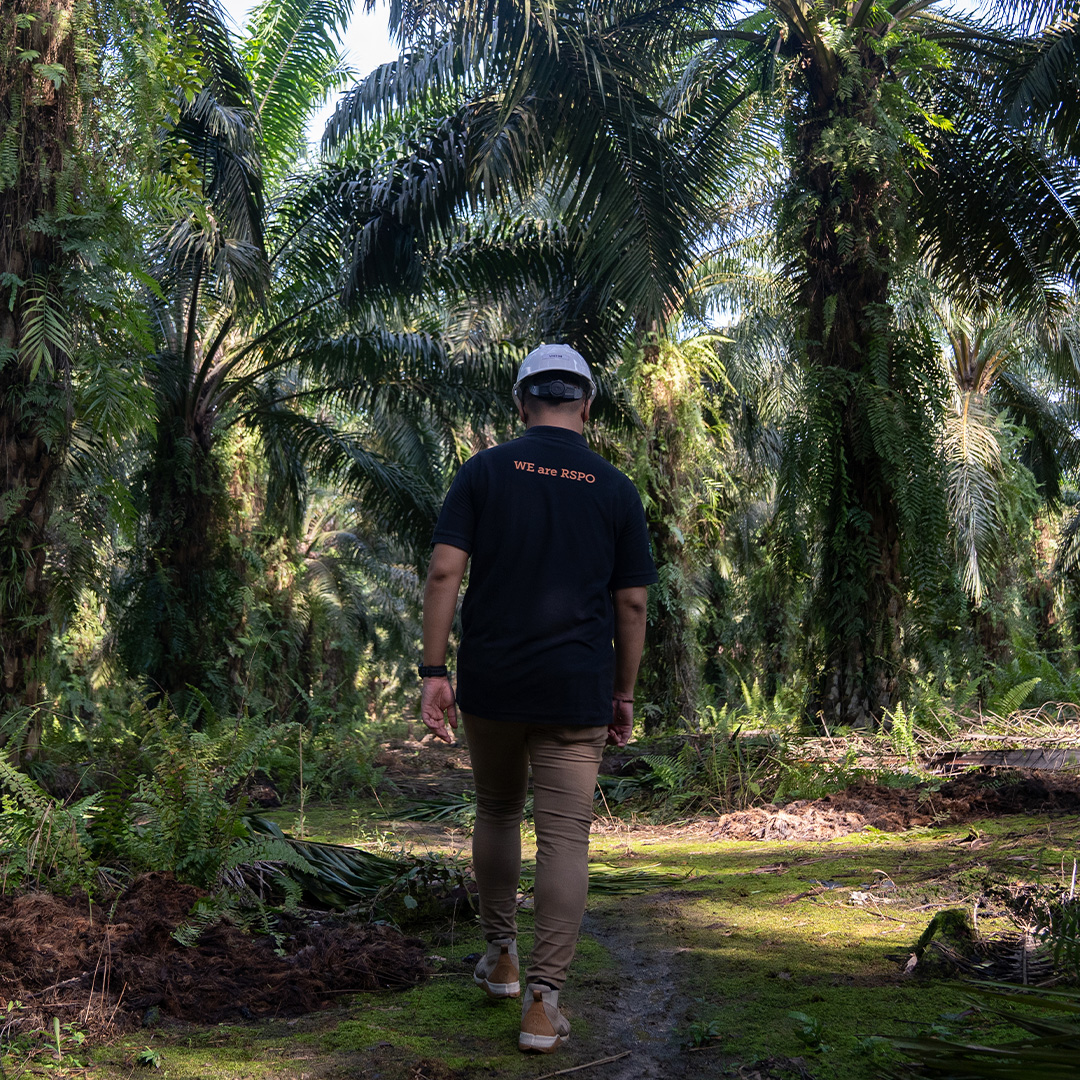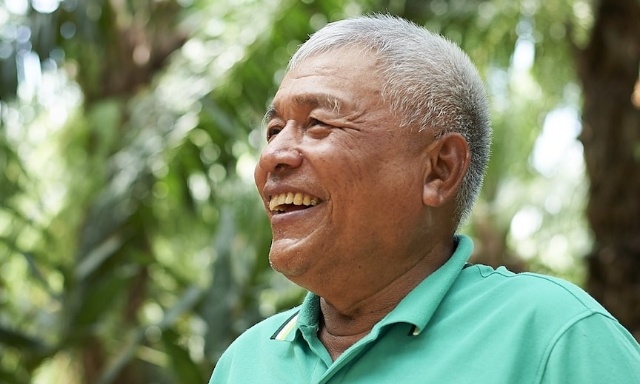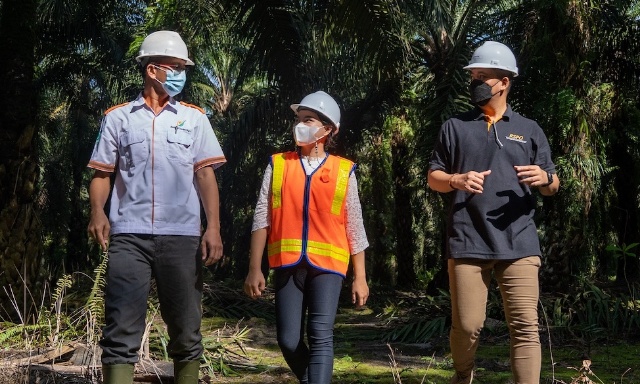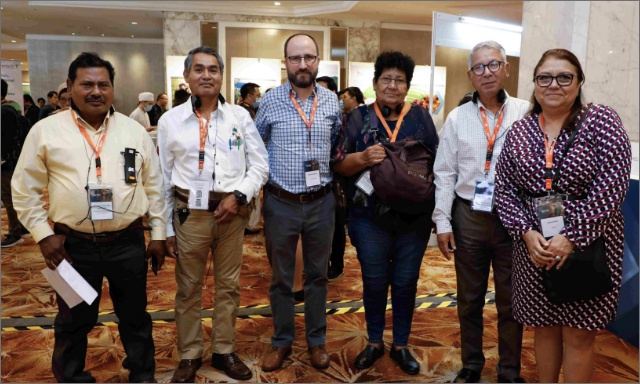Click here to DOWNLOAD PDF (RSPO_Specific_by principle.pdf)
| NO. | PRINCIPLES AND CRITERIA | INDICATORS | COMMENTS / ISSUES | WORKING GROUP / TASKFORCE |
| 1 | Commitment to transparency | |||
| 1.1 | Oil palm growers and millers provide adequate information to other stakeholders on environmental, social and legal issues relevant to RSPO Criteria, in appropriate languages & forms to allow for effective participation in decision making. | Records of requests and responses must be maintained. | ||
| 1.2 | Management documents are publicly available, except where this is prevented by commercial confidentiality or where disclosure of information would result in negative environmental or social outcomes. |
This concerns management documents relating to environmental, social and legal issues that are relevant to compliance with RSPO Criteria. Documents that must be publicly available include, but are not necessarily limited to:
|
||
| 2 | Compliance with applicable laws and regulations | |||
| 2.1 | There is compliance with all applicable local, national and ratified international laws and regulations. |
|
||
| 2.2 | The right to use the land can be demonstrated, and is not legitimately contested by local communities with demonstrable rights. |
|
||
| 2.3 | Use of the land for oil palm does not diminish the legal rights, or customary rights, of other users, without their free, prior and informed consent. |
|
||
| 3 | Commitment to long-term economic and financial viability | |||
| 3.1 | There is an implemented management plan that aims to achieve long-term economic and financial viability. |
|
||
| 4 | Use of appropriate best practices by growers and millers | |||
| 4.1 | Operating procedures are appropriately documented and consistently implemented and monitored. |
Records of monitoring & the actions taken are maintained. |
Additional indicator for all supply chain operators wishing to comply with EU-RED requirements: shall have a documentation management system. The system shall as a minimum contain all necessary documentation / evidence in relation to the claims they make or rely on. The documentation/evidence shall be kept for a minimum of 5 years | EU-RED: RSPO-RED requirements 2.3 |
| Plantation and mill management should use the guidance on good practice wherever applicable including that for POME management. | GHGWG2 | |||
| 4.2 | Practices maintain soil fertility at, or where possible improve soil fertility to, a level that ensures optimal and sustained yield. |
|
||
| 4.3 | Practices minimise and control erosion and degradation of soils. |
|
NIs need to define specific information on appropriate management of peat as part of “appropriate performance thresholds” (current text in P&C says “should refer to national guidance”) | NPP |
| NIs need to have details on peat depth | TFS | |||
| Plantations on peat should be managed at least to the standard set out in the guidance on best management practices (especially water management, fire avoidance, fertiser use and vegetation cover). | GHGWG2 | |||
| 4.4 | Practices maintain the quality and availability of surface and ground water. |
|
||
| 4.5 | Pests, diseases, weeds and invasive introduced species are effectively managed using appropriate Integrated Pest Management (IPM) techniques. |
Due to problems in the accuracy of measurement, monitoring of pesticide toxicity is not applicable to smallholders. |
||
| 4.6 | Agrochemicals are used in a way that does not endanger health or the environment. There is no prophylactic use of pesticides, except in specific situations identified in national Best Practice guidelines. Where agrochemicals are used that are categorised as World Health Organisation Type 1A or 1B, or are listed by the Stockholm or Rotterdam Conventions, growers are actively seeking to identify alternatives, and this is documented. |
|
Identify safe and cost effective alternatives to replace chemicals that are categorised as World Health Organisation Type 1A or 1B, or listed by the Stockholm or Rotterdam Conventions, and paraquat. |
TFS |
|
HANDLING: Improvements needed in maintaining employee knowledge & skills and enhancement of quality of information materials. Improvements in maintenance of application equipment needed. |
CABI report | ||
| 4.7 | An occupational health and safety plan is documented, effectively communicated and implemented. |
The health and safety plan covers the following:
|
||
| 4.8 | All staff, workers, smallholders and contractors are appropriately trained. |
|
||
| 5 | Environmental responsibility and conservation of natural resources and biodiversity | |||
| 5.1 | Aspects of plantation and mill management, including replanting, that have environmental impacts are identified, and plans to mitigate the negative impacts and promote the positive ones are made, implemented and monitored, to demonstrate continuous improvement. |
|
||
| 5.2 | The status of rare, threatened or endangered species and high conservation value habitats, if any, that exist in the plantation or that could be affected by plantation or mill management, shall be identified and their conservation taken into account in management plans and operations. |
Information should be collated that includes both the planted area itself and relevant wider landscapelevel considerations (such as wildlife corridors). This information should cover:
|
||
| 5.3 | Waste is reduced, recycled, re-used and disposed of in an environmentally and socially responsible manner. |
|
||
| 5.4 | Efficiency of energy use and use of renewable energy is maximised. | • Monitoring of renewable energy use per tonne of CPO or palm product in the mill. • Monitoring of direct fossil fuel use per ton of CPO (or FFB where the grower has no mill). | ||
| 5.5 | Plans to reduce pollution and emissions, including greenhouse gases, are developed, implemented and monitored. | • An assessment of all polluting activities must be conducted, including gaseous emissions, particulate/soot emissions and effluent (see also criterion 4.4). • Significant pollutants and emissions must be identified and plans to reduce them implemented. • A monitoring system must be in place for these significant pollutants which goes beyond national compliance. • The treatment methodology for POME is recorded. • Note: RSPO needs to address all issues relating to Greenhouse Gas emissions, as set out in the Preamble to this document. | The RSPO P&C should continue to require monitoring and also require reporting of information on GHG emissions resulting from palm oil production. PalmGHG (developed via consensus, field tested, peer reviewed) or an equivalent should be used to provide a common framework. | GHGWG2 |
| 5.6 |
Additional criterion for all producers wishing to comply with EU-RED requirements (see RSPO-RED requirements: 2.1.v): One of the following options must be used for calculation of GHG values: Or (b) Use of actual greenhouse gas values to calculate total greenhouse gas savings according to the EU-RED methodology. Or (c) Until 31 March 2013, palm oil can be claimed to be in compliance with the EU-RED greenhouse gas criterion if there is evidence that the palm oil mill was in operation on or before 23 January 2008. |
EU-RED | ||
| 6 | Responsible consideration of employees and of individuals and communities affected by growers and mills | |||
| 6.1 | Aspects of plantation and mill management, including replanting,that have social impacts are identified in a participatory way, and plans to mitigate the negative impacts and promote the positive ones are made, implemented and monitored, to demonstrate continuous improvement. |
|
Definition of “participatory” in relation to carrying out the SIA | NPP |
| 6.2 | There are open and transparent methods for communication and consultation between growers and/or millers, local communities and other affected or interested parties. |
|
||
| 6.3 | There is a mutually agreed and documented system for dealing with complaints and grievances, which is implemented and accepted by all parties. |
|
||
| 6.4 | Any negotiations concerning compensation for loss of legal or customary rights are dealt with through a documented system that enables indigenous peoples, local communities and other stakeholders to express their views through their own representative institutions. |
|
||
| 6.5 | Pay and conditions for employees and for employees of contractors always meet at least legal or industry minimum standards and are sufficient to provide decent living wages. |
|
||
| 6.6 | The employer respects the right of all personnel to form and join trade unions of their choice and to bargain collectively. Where the right to freedom of association and collective bargaining are restricted under law, the employer facilitates parallel means of independent and free association and bargaining for all such personnel. |
|
||
| 6.7 | Children are not employed or exploited. Work by children is acceptable on family farms, under adult supervision, and when not interfering with education programmes. Children are not exposed to hazardous working conditions. . | Documentary evidence that minimum age requirement is met | ||
| 6.8 | Any form of discrimination based on race, caste, national origin, religion, disability, gender, sexual orientation, union membership, political affiliation, or age, is prohibited. |
|
||
| 6.9 | A policy to prevent sexual harassment and all other forms of violence against women and to protect their reproductive rights is developed and applied. |
|
||
| 6.10 | Growers and mills deal fairly and transparently with smallholders and other local businesses. |
|
||
| 6.11 | Growers and millers contribute to local sustainable development wherever appropriate. |
|
||
| 7 | Responsible development of new plantings | |||
| 7.1 | New issues relevant to P7
A comprehensive and participatory independent social and environmental impact assessment is undertaken prior to establishing new plantings or operations, or expanding existing ones, and the results incorporated into planning, management and operations. |
|
Need for clear definition of “New Planting” within P&C text as per NPP Detailed Flow Chart Document – “Notes under Activities 1: Impact Assessments” | NPP |
| To specify applicability to scheme smallholders | NPP | |||
| Incorporate consistency of cut off for applicability of P7 to independent smallholders, which says – “Smallholder groups whose members plan to expand their aggregate holdings by less than 500 ha. in any one year must develop a simplified SEIA (7.1, 7.2 and 7.4) and must observe 7.3, 7.4 and 7.6. Details of expansion plans should be detailed in group business plans”, and “Smallholder groups whose members plan to expand their aggregate holdings by more than 500 ha in any one year must comply with all criteria in principle 7”. | TFS | |||
| Additional criterion for all operators wishing to comply with EU-RED requirements: There must be evidence that the land was under palm oil production in January 2008 EU-RED: RSPO-RED requirements | 2.1.i | |||
| Additional criterion for all operators wishing to comply with EU-RED requirements: There is evidence that the land was not a wetlands in January 2008. In case the land was a wetlands in January 2008, there is evidence that the production of palm oil has not changed the nature and the status of the wetlands. EU-RED: RSPO-RED requirements | 2.1.iii | |||
| Additional criterion for all operators wishing to comply with EU-RED requirements: There is evidence that the land was not a peatland in January 2008. In case the land was a peatland, there is evidence that the production of palm oil does not involve drainage of previously undrained soil. This means that for peatland that was partially drained in January 2008 a subsequent deeper drainage, affecting soil that was not already fully drained, would constitute a breach of the criterion. | EU-RED: RSPO-RED requirements 2.1.iv | |||
| The RSPO P&C should require new operations (plantations and mills) to be designed to decrease GHG emissions. | GHGWG2 | |||
| Total carbon emissions (above and below ground) from expansion should not result in a carbon debt greater than that which can be paid back in the period of one rotation over the whole management unit. Several members of the group strongly urged for a date of January 2012 for calculating the baseline value for the carbon stock debt analysis but consensus was not reached. It was suggested that it would be useful to check on the ISPO requirement. Guidance 1: Expansion of plantations should be on low C stock (‘degraded’) land (ie avoiding peat, areas with high biomass etc) or on land which is in current intensive agricultural or plantation use. | GHGWG2 | |||
| Guidance 2: Low C-stock/degraded land: A definition needs to be developed – this could be based on the carbon in a mature plantation or the time averaged figure. This can be averaged over the whole expansion area (ie the average of oil palm, riparian areas, forest set-aside etc). | ||||
| To achieve this for mills they should incorporate low emission management (eg better management of POME, efficient boilers etc). | GHGWG2 | |||
| There should be reporting on approaches used. | GHGWG2 | |||
| 7.2 | Soil surveys and topographic information are used for site planning in the establishment of new plantings, and the results are incorporated into plans and operations. |
|
||
| 7.3 | New plantings since November 2005, have not replaced primary forest or any area required to maintain or enhance one or more High Conservation Values. |
|
Need for consistency of cut-off date for “new planting” (i.e. the P&C says one date, yet the NPP says another date) | NPP |
| Need for HCV toolkit for oil palm which also needs to be country specific i.e. as a NI Inclusion of where good practice information and resources are available for conducting RSPO required HCV assessments | NPP | |||
| National Interpretation will provide guidance on whether and how the RSPO required HCV assessment can be combined and carried out, taking into account national laws and procedures. | NPP | |||
| Text to clarify that HVC assessment does not need to be duplicated prior to certification audit if conducted under NPP and that HCV assessment carried out for the New Planting Procedure shall be recognized at point of certification | NPP | |||
| Specific timelines for compensation of HCV areas converted: • Nov. 2005 to end Nov. 2007 – companies required to compensate for lost • HCV areas as a result of land clearance • From Dec. 2007 to end Dec. 2009 – companies required to compensate the total area cleared without prior HCV assessment. • From Jan. 2010 onwards – companies required to compensate for the total area cleared plus a multiplier. | CTF | |||
| Reviews and updates of the compensation mechanism will coincide with the review of the P&C | CTF | |||
| Land acquisitions are also liable for HCV compensation: • If land has been previously cleared (and/or planted) for a commercial purpose, the company that acquires the land will be required to bear the responsibility for rectifying noncompliances (since end Nov. 2005). If cleared (and/or planted) in a non-commercial manner (by local communities or smallholders), the company will not be subject to compensation for non-compliances prior to ownership. | CTF | |||
|
On compensation based on HCV:
Compensation actions for HCVs 4 to 6 will be applied locally as a priority and through dialogue with affected parties. |
CTF | |||
| Additional indicator for all operators wishing to comply with EU-RED requirements: There is evidence that the land is not designated for nature protection purposes by law or by the relevant competent authority. There is evidence that the land is not designated for the protection of rare, threatened or endangered ecosystems or species recognised by international agreements or included in lists drawn up by intergovernmental organisations or the International Union for the Conservation of Nature, subject to the recognition of these organisations as outlined in Article 18(4) of the EU-RED. | EU-RED: RSPO-RED Requirements 2.1.ii | |||
| 7.4 | Extensive planting on steep terrain, and/or on marginal and fragile soils, is avoided. |
|
NIs need to define specific information on “marginal soils”, “fragile soils” (current text in P&C says “should consider”) | NPP |
| NIs need to define specific information on appropriate management of peat (current text in P&C says “should consider”) | NPP | |||
| 7.5 | No new plantings are established on local peoples’ land without their free, prior and informed consent, dealt with through a documented system that enables indigenous peoples, local communities and other stakeholders to express their views through their own representative institutions | Refer to criteria 2.2, 2.3, 6.2, 6.4 and 7.6 for indicators and guidance on compliance. | Definition of “local peoples’ land” required | NPP |
| 7.6 | Local people are compensated for any agreed land acquisitions and relinquishment of rights, subject to their free, prior and informed consent and negotiated agreements. |
|
||
| 7.7 | Use of fire in the preparation of new plantings is avoided other than in specific situations, as identified in the ASEAN guidelines or other regional best practice. |
|
||
| 8 | Commitment to continuous improvement in key areas of activity | |||
| 8.1 | Growers and millers regularly monitor and review their activities and develop and implement action plans that allow demonstrable continuous improvement in key operations. | The action plan for continual improvement should be based on a consideration of the main social and environmental impacts and opportunities of the grower/mill, and should include a range of indicators covered by these principles and criteria. As a minimum, these must include, but not necessarily be limited to: • Reduction in use of certain chemicals (criterion 4.6). • Environmental impacts (criterion 5.1). • Waste reduction (criterion 5.3). • Pollution and emissions (criterion 5.6). • Social impacts (6.1). | The RSPO P&C should continue to require the development and implementation of a plan to reduce GHG emissions identified in their existing operations. The plan should include reported timebound targets for implementing the measures in the plan. There should be regular reporting on progress. | GHGWG2 |
| 9 | General comments to Principles & Criteria | |||
| 9.1 | It is expected that elements of the NPP will later on be included within the RSPO P&C during the upcoming review in 2012 | NPP | ||
| There is a need to standardize text during P&C review in NPP and relevant sections in the P&C. | NPP | |||
| NI to clarify differences between meeting legally required assessments and additional RSPO required assessments. | NPP | |||
| NI of NPP required NPP Consideration should be given to allowing more flexibility in the timing for smallholders and small companies to implement changes recognising their more limited resources and capacity. |
GHGWG2 | |||
| Re category of smallholders: The distinction between ‘scheme smallholders’ and ‘independent smallholders’ is not always easy to make. The Task Force on Smallholders recognises that NIWGs will need to look in detail at how this distinction applies in their country and provide comprehensive lists of which types of smallholders best fit which category, and RSPO to allow flexibility in the way this distinction is applied in national interpretations to ensure that the typology does not exclude or disadvantage smallholders in some countries. | TFS | |||
| 10 | Chain of custody | |||
| 10.1 | RSPO Chain of Custody Standard: 6, Module D; CPO Mills – Segregation. It has been recommended that this needs to be referenced or acknowledged in the P&C | T&T: RSPO Supply Chain Certification Standard | ||
| RSPO Chain of Custody Standard: 6, Module E; CPO Mills – Mass Balance. It has been recommended that this needs to be referenced or acknowledged in the P&C | T&T: RSPO Supply Chain Certification Standard | |||
| A note/criterion that: Facilities shall use a RSPO supply chain system which follows physical oil through the supply chain (Identity Preserved, Segregated or Mass Balance). The RSPO Book & Claim option is not allowed under EU-RED requirements. | EU-RED: RSPO-RED Requirements 2.2.4.i | |||
| Reference to the RSPO-IT System (RSPO transaction registration system for certified palm oil products) | EU-RED: RSPO-RED Requirements, Annex 1 | |||
| 11 | Definitions in P&C | |||
| 11.1 |
Update definitions to make consistent with currently used definitions of smallholders to include distinction between ‘scheme smallholders’ and ‘independent smallholders’ as contained within “Generic Guidance for Independent Smallholders”
Scheme smallholders: “Scheme smallholders, while also very diverse, are characterised as smallholders who are structurally bound by contract, by a credit agreement or by planning to a particular mill. Scheme smallholders are often not free to choose which crop they develop, are supervised in their planting and crop management techniques, and are often organised, supervised or directly managed by the managers of the mill, estate or scheme to which they are structurally linked.” |
TFS | ||
| On “medium growers”: The Task Force has also identified an intermediate category of grower who have holdings larger than 50 hectares but who do not own a mill and who thus produce Fresh Fruit Bunches and not crude palm oil. The Task Force has referred to such growers as ‘medium growers’. To date there are no generic provisions in the RSPO system to allow for the certification of such growers unless they choose to be certified along with the mills that they sell to. It is not yet clear if there is a demand from such growers for RSPO certification but in Malaysia independent growers with holdings of between 40 ha. and 500 ha. are referred to as ‘small growers’ and provisions for their certification are included in the November 2010 National Interpretation for Malaysia. | TFS | |||
| Definition of “land preparation” (Occurs in Indicators and Guidance of C 4.7, C 7.2 and C 7.7) | NPP |
Keep reading
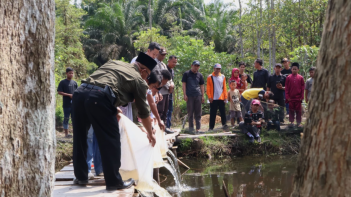
Rowo Ombo: From Neglected Swamp to a Symbol of Hope and Conservation in Jambi, Indonesia
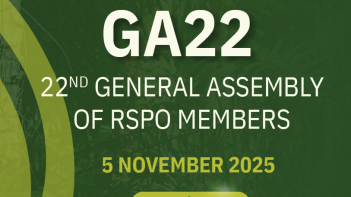
Save the Date: The 22nd General Assembly (GA22) of RSPO Members
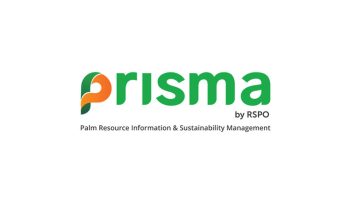
Access into prisma

10 Years of RSPO in China: Driving Palm Oil Transformation Towards Sustainability
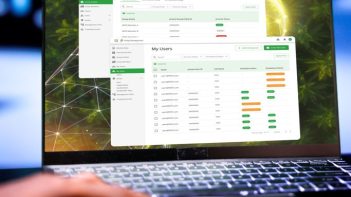
Updated Trace Function in prisma

Call for Expression of Interest: Independent Investigation of a Complaint
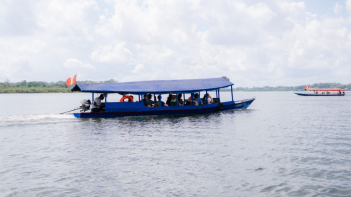
Latin American Smallholders, Key Global Brands Gather in Peruvian Amazon to Advance Sustainable Palm Oil
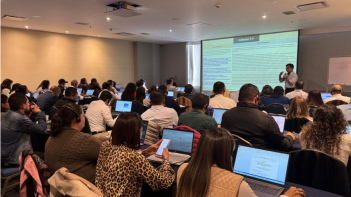
RSPO Forum for Members and Certification Bodies 2025: Strengthening Capacities and Building Bridges with RSPO Members
